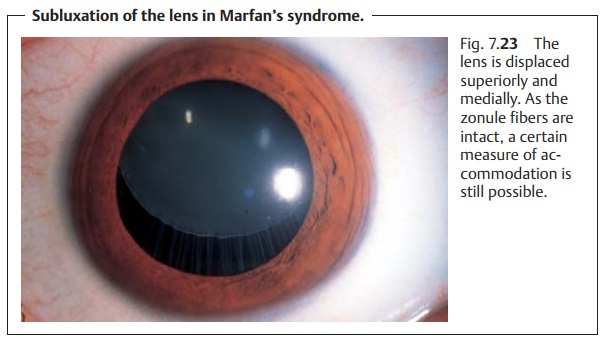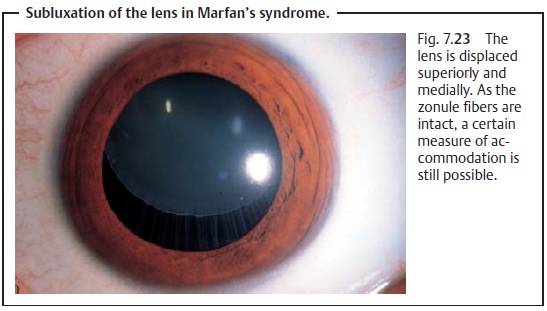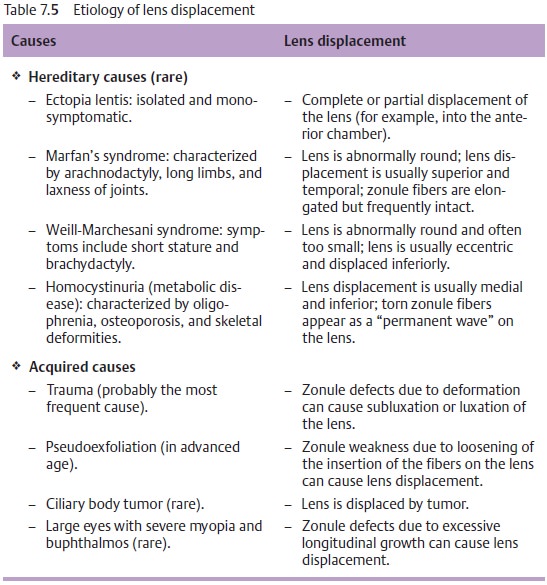Chapter: Ophthalmology: Eye Lens
Eye Lens Dislocation

Lens Dislocation
Definition
❖ Subluxation (partial dislocation): The suspension of the lens (the zonulefibers) is slackened, and
the lens is only partially within the hyaloid fossa (Fig. 7.23).

❖ Luxation (complete dislocation): The lens is torn completely free andhas migrated into the
vitreous body or, less frequently, into the anterior chamber.
Etiology:
There are several causes of lens dislocation
(Table 7.5).Mostfrequently, it is due totrauma(see
contusion of the eyeball). Later in life,pseudoexfoliation
may also lead to subluxation or luxation of the lens. Hereditary causes and
metabolic disease produce lens displacementearlyyet on the whole are rare.
Additional rare causes include hyperlysinemia (characterized by
retarded mental development and seizures) and sulfite oxi-dase deficiency (which leads to mental retardation and
excretion of cysteinein the urine).

The most frequent atraumatic causes of lens
dislocation are Marfan’s syndrome, homocystinuria, and Weill-Marchesani
syndrome.
Symptoms:
Slight displacement may be of no functional
significance to thepatient. More pronounced displacement produces severe
optical distortion with loss of visual acuity.
Diagnostic considerations:
Cardinal symptoms include tremulous motion
ofthe iris and lens when the eye moves (iridodonesis and phacodonesis). These
symptoms are detectable under slit-lamp examination.
Treatment:
Optical considerations (see symptoms) and the
risk of secondaryangle closure glaucoma from protrusion of the iris and
dislocation of the lens into the anterior chamber are indications for removal
of the lens.
Related Topics